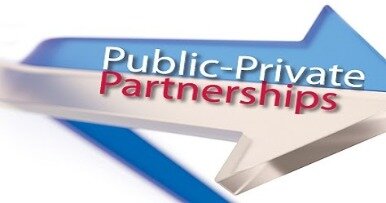Whats the difference between cash and accrual?

This system focuses on cash flow, with a particular emphasis on cash on hand. For newer or very small businesses, staying profitable is of great concern. Knowing exactly how much cash is available helps determine when bills get paid or how quickly. For example, corporations other than S-corps must use accrual basis accounting if they averaged over $25 million in gross receipts over the past three years. Certain corporations and tax shelters – including those that make sales on credit – are also prohibited from using cash accounting. Cash and accrual accounting differ in a number of ways, but the main difference is when income and expenses are actually reflected in a business’s books.
The cash method of accounting certainly has its benefits, including ease of use and improved cash flow. This is because it only applies to payments from clients—in the form of cash, checks, credit card receipts, or gross receipts—when payment is received. We’ll explain the basics of the cash accounting and accrual accounting methods, as well as the pros and cons of each so that you can make an informed decision.
The Tax Cuts and Jobs Act increased the number of small business taxpayers who were entitled to use the cash basis accounting method. As of January 2018, small business taxpayers with average annual gross receipts of $25 million or less in the prior three-year period could use it. Deciding between cash basis or accrual basis accounting really depends on the state of your business. For reporting purposes, accrual basis will usually provide better financial intelligence on the true state of your business.

In accrual accounting, you use a double-entry system in which every transaction is recorded under a minimum of two accounts. Each transaction results in a credit in one account and an equal debit in another. Large companies using accrual accounting prefer the double-entry system, as it makes it easier to record credits and debits for various accounts like assets, liabilities, income, expenses, and equity.
Under the accrual basis of accounting, revenue is recognized when earned and expenses are recognized when incurred, regardless of whether payment has been received or disbursed. This method follows the matching principle of accounting, where revenue and expense are captured in the period they were generated. The difference between cash basis accounting vs accrual basis accounting is based on when your revenue and expenses are reflected in your books. Cash-basis accounting is the easier of the two methods because, as its name implies, all bookkeeping simply follows the cash. Accrual accounting became necessary as the complexity of business transactions grew. It became the prevalent accounting method for larger companies (as well as some small ones) because it could depict a more accurate representation of a company’s financial health.
Is Accrual Accounting in Accordance with GAAP?
In 2017, the Tax Cuts and Jobs Act introduced a provision that allows businesses with gross receipts of less than $25 million to use cash basis accounting, regardless of their industry or type of business. This change simplifies accounting for small businesses, reducing their administrative burden and increasing their ability to manage their cash flow. Some small businesses can choose the hybrid method of accounting, wherein they use accrual accounting for inventory and the cash method for their income and expenses. Accounting software and tools like QuickBooks can help with either method. With accrual accounting, you record income and expenses as they are billed and earned.
Whenever you look at your bank balance, you know exactly what resources are at your disposal. It also means that your revenue generally will not be subject to tax until the cash is in the bank (although there is also a concept of ‘constructive receipt’ for certain amounts available upon demand). Cash basis accounting records revenue and expenses when actual payments are received or disbursed. It doesn’t account for either when the transactions that create them occur. On the other hand, accrual accounting records revenue and expenses when those transactions occur and before any money is received or paid out. The federal budget currently reports the costs of nearly all commitments on a cash basis.
What is Accrual Basis Accounting?
With cash accounting, you only pay taxes on the income you receive, not the income you earn. Most medical practices without outside investors choose to use cash accounting. Cash accounting also lets you pay taxes only on the revenue you received during a year, not any still-outstanding accounts receivable.
- Cash accounting works well for many small businesses; however, if there is a concern over the health of the business and crucial details apart from cash flow, you should opt for a different accounting method.
- To understand this better, let’s consider the following scenario for both methods.
- Simplicity can work for individuals or very small businesses, but not as much as a company expands.
This is because accrual accounting provides a much more complete and comprehensive view of a company’s financial performance and condition than other accounting types. The accrual accounting method tracks earnings and expenses when first incurred, rather than waiting to document them when money gets received or bills paid. Therefore, the accrual-basis accounting method ultimately provides a greater overview of your business’s financial situation, taking far more into account than cash flow or cash on hand. Cash basis accounting is the simplest form of accounting and doesn’t have to adhere to Generally Accepted Accounting Principles (GAAP) guidelines. You record revenue when you receive the actual cash from customers and expenses are recorded when you actually pay vendors and employees.
So, you need to plan carefully to ensure you have enough money to cover your tax bill. Cash basis is the simplest type of accounting and is exempt from the requirements of Generally Accepted Accounting Principles (GAAP). That being said, the cash method usually works better for smaller businesses that don’t carry inventory. If you’re an inventory-heavy business, your accountant will probably recommend you go with the accrual method. Let’s look at an example of how cash and accrual accounting affect the bottom line differently. The cash method is also beneficial in terms of tracking how much cash the business actually has at any given time; you can look at your bank balance and understand the exact resources at your disposal.
Cash vs. accrual at a glance
This report discusses the relative merits of those measures and explores the implications of expanding the use of accrual measures for decisionmaking purposes. At Windes, our experienced bookkeeping professionals are experts in the intricacies of cash-based and accrual-based accounting. Additionally, your small business doesn’t have to pay income tax on any revenue until the moment it’s deposited into your bank account. Under the accrual method, you might also have to pay taxes on earnings you haven’t yet received.
- For example, under the cash basis method, retailers would look extremely profitable in Q4 as consumers buy for the holiday season.
- Businesses using the accrual method to keep an accurate picture of accounts payable and receivable will maintain their ledgers according to the current status of a bill or invoice.
- The difference between cash and accrual accounting lies in the timing of when sales and purchases are recorded in your accounts.
- Knowing exactly how much cash is available helps determine when bills get paid or how quickly.
Though the cash-basis accounting technique has advantages, there are notable setbacks. Businesses that start off using one accounting method and decide to change later can do so by filing IRS Form 3115 and getting approval from the IRS to change their accounting method (if they qualify). For example, under the cash basis method, retailers would look extremely profitable in Q4 as consumers buy for the holiday season. However, they’d look unprofitable in the next year’s Q1 as consumer spending declines following the holiday rush.
The difference between cash and accrual
Finally, for practices that pre-purchase goods, like oncology practices, the cash accounting method lets you deduct those costs when you purchase the medication. Under accrual accounting, you would instead deduct the cost of prescription drugs when you provide them to a patient. With longer-storage items, the accrual method can create lengthy gaps between your purchase date and when you can deduct the cost of the purchase.
The difference between cash and accrual accounting lies in the timing of when sales and purchases are recorded in your accounts. Cash accounting recognizes revenue and expenses only when money changes hands, but accrual accounting recognizes revenue when it’s earned, and expenses when they’re billed (but not paid). With the accrual accounting method, income and expenses are recorded when they’re billed and earned, regardless of when the money is actually received. The income statement provides insights on the company’s income, expenses, and profit or loss over a period of time.
You don’t make a note of any invoices or bills you send, but instead record income when you actually have the money in hand. If your business makes less than $25 million in sales a year and doesn’t sell merchandise directly to consumers, cash accounting might How to Calculate Depreciation Rate % From Depreciation Amount be the best choice for you. It’s a simple system, similar to how you might track your personal finances. Choosing the appropriate method of accounting for your business is a lot easier once you know how the choice affects different areas of your accounting.
And under cash-basis accounting a business doesn’t have to pay taxes on cash it hasn’t collected. There is a widely used style of accounting known as hybrid accounting or modified cash-basis accounting that combines aspects from both cash and accrual accounting. It should be noted, however, that many hybrid accounting methods are not consistent with the Generally Accepted Accounting Principles and may not be accepted by government entities for taxes and audits. Because cash accounting only records when payments are made or received, a statement like the above will more closely align itself with the company’s cash flow statement than accrual accounting might. Without looking at a cash flow statement, we can say with certainty that there is $13,400 in Tim’s account, where he started with $10,000. Using the cash method for income taxes is popular with businesses for two main reasons.
